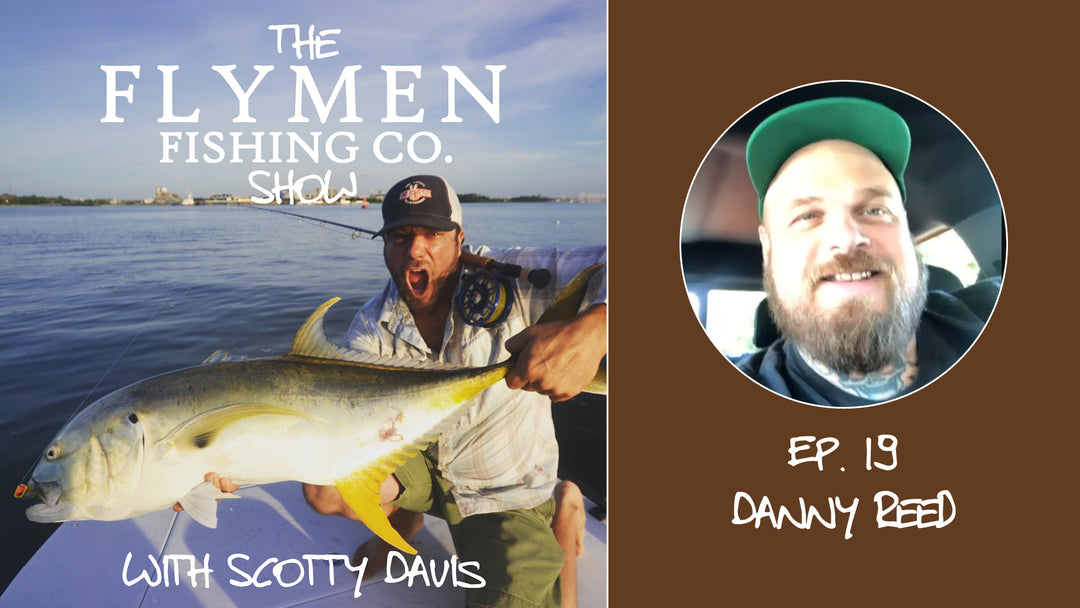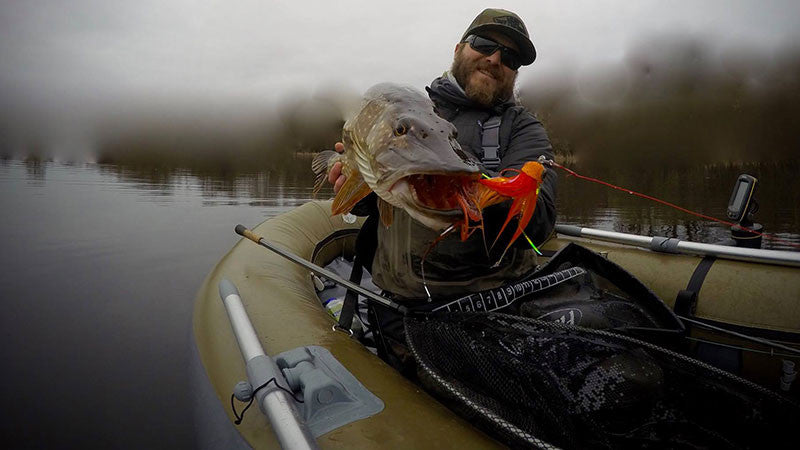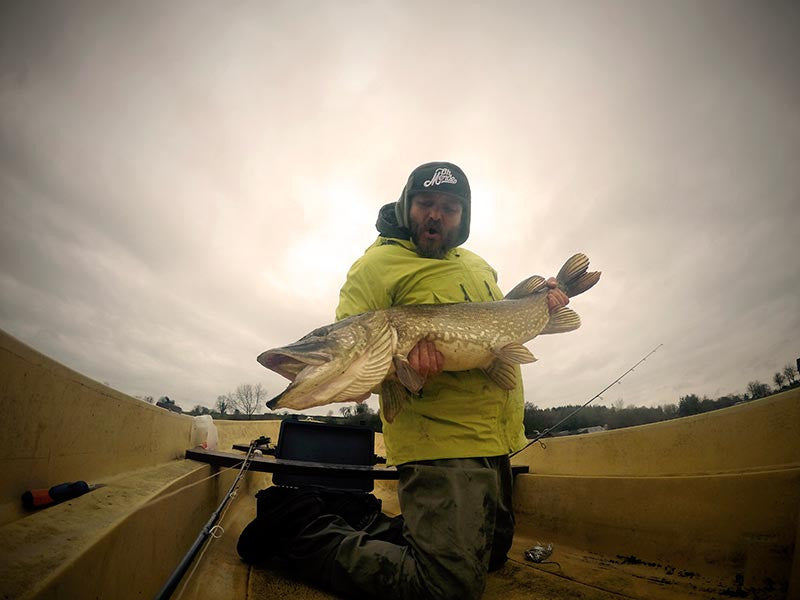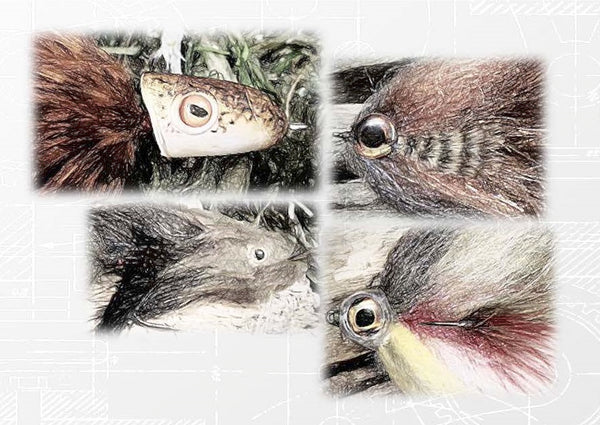Flymen Blog


While I’m always excited to catch any fish regardless of size, the level of excitement goes up exponentially when casting for predatory fish like musky and pike.
There is something seemingly primal about these fish — maybe it’s all their teeth in that crooked grin. There are a couple of puzzles to figure out when designing and tying big flies for big fish.
To get bigger fish interested in your flies, they have to be of sizable equity to the fish. In other words, you throw a big fly to a big fish because they need a bigger meal to sustain their weight. Smaller patterns will more often than not get the results that a larger fly will, especially in waters known to house bigger fish.
Big flies can often be mistaken for a lot of materials stacked onto a hook. The more materials you tie on a hook, the heavier it will be. With some musky flies being a foot long, you don’t want your arm to fall off halfway through a fishing trip.

The Esox family has evolved over thousands of years to give us a top predator to chase on the fly.
These beasts' senses are tuned to the max.
One sense that is important for pikes/muskies is the lateral line, a system of tactile sense organs located in the head and along both sides of the body, used to detect movement and vibration in the surrounding water.
They use their lateral line in conjunction with their sight to give them a more accurate picture of what’s going on – how far away their prey is, how fast it's moving, and its size.
The lateral line is often forgotten by the fly angler. We tie pretty flies, but most of them have a very small footprint in the water. I'm not saying these don’t work, but why not maximize your chances of attracting more fish or perhaps bigger fish?
So how can you make a loud fly?

Catching a pickerel, pike, or musky on a fly rod is an intense experience that translates into obsession very quickly.
There are only a handful of fish that I can say I’m obsessed with targeting on a fly rod.
Trout are at the top of my list, but any of the fish within the esocidae, or esox, family come in at a close second.
Spring and fall are the typical seasons when big pike are most vulnerable to a fly angler, but I can’t help but target them all year long, summer being no exception.
These tips will help you dial in summer pike within your local system.

Catching big trophy fish is often the goal we hope to reach.
It can sometimes happen by surprise or by luck.
But catching bigger fish regularly is what makes the difference between the men and the boys and between the women and the girls.
Big fish are at the top of the food chain, and they didn’t get there by chance.
Usually they're clever, wary, and opportunistic.
How can a fly angler put this to good use? Continue reading





